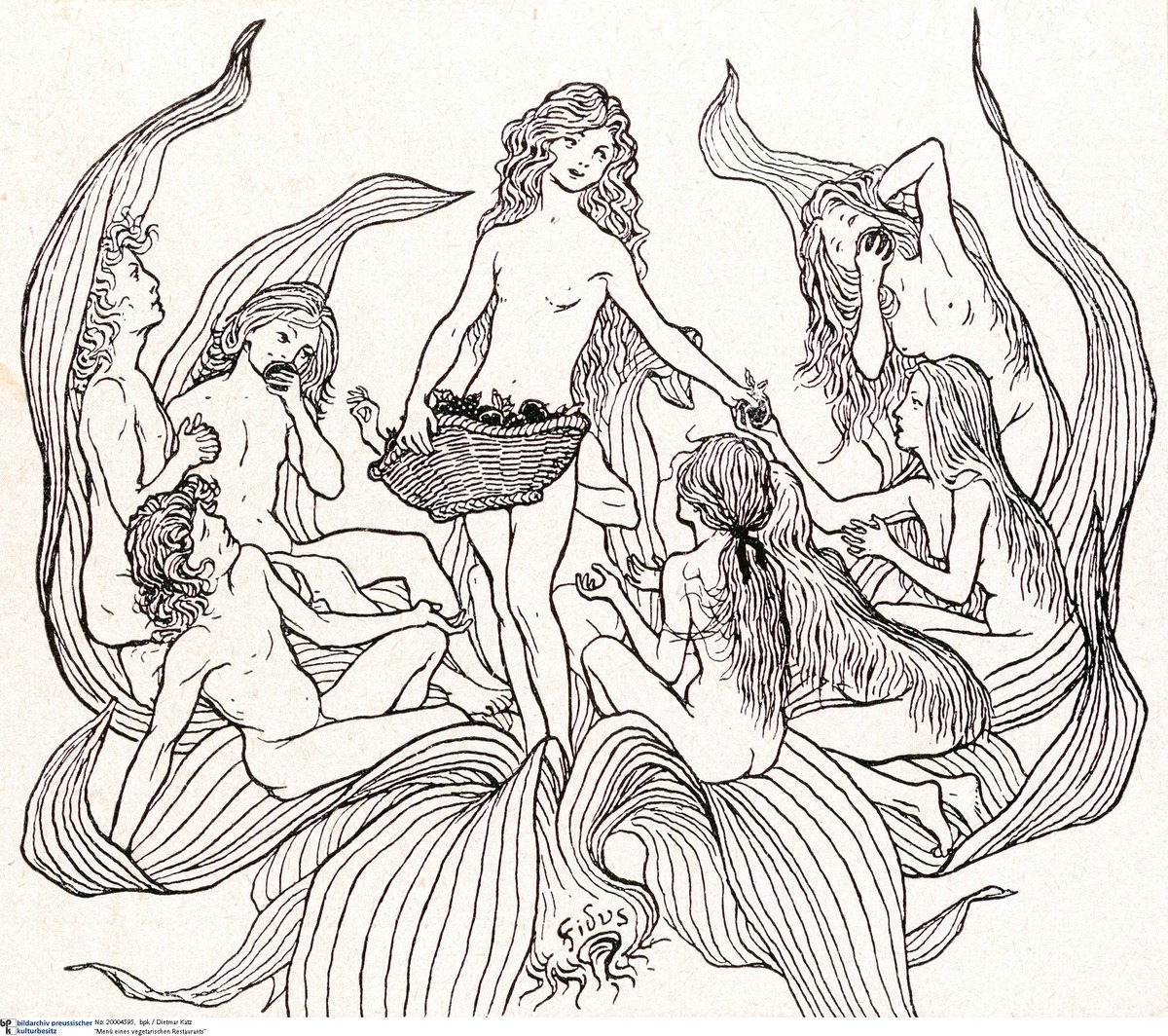Abstract
Germany industrialized rapidly during the latter half of the
nineteenth century – between the 1870s and the early 1900s, an
agricultural society built around small towns and villages had become an
industrialized society focused in and around urban centers. The great
speed at which these social and economic changes occurred led some
Germans to embrace alternative lifestyles that focused on bringing
people closer to nature. The
Lebensreform [life reform] movement
critiqued and rejected industrialization and urbanization, promoting a
vegetarian diet, clothing reform to free people from physically
constricting fashions, and
Freikörperkultur [nudism], among
other things. A new appreciation for communing with the natural
environment led to the creation of hiking and nature societies such as
the Wandervogel (founded in 1901 in a Berlin suburb). Some people even
abandoned the Judeo-Christian religious traditions in which they had
been raised in favor of a spirituality that venerated “Mother Earth” and
the human spirit in the natural world.
The image shown here, drawn by the German artist Fidus (born Hugo
Höppener, 1868-1948), is an advertisement for a vegetarian restaurant in
Berlin. Vegetarianism was an important aspect of the
Lebensreform movement in Germany, and
became popular throughout western Europe during the nineteenth century.
The image incorporates multiple aspects of the
Lebensreform movement, such as nudism
and communion with nature, and creates a connection between a vegetarian
diet and the healthy, youthful bodies of the women and men depicted.
Höppener, a devoted disciple of
Lebensreform, was named “Fidus”
(faithful) by his teacher, Karl Wilhelm Diefenbach (1851-1913), an
artist and leading figure in the
Lebensreform movement who preached
about living in harmony with nature. Fidus’ art, which drew on the
principles of Art Nouveau
(Jugendstil), served as a direct
inspiration for the psychedelic artwork of the 1960s.
